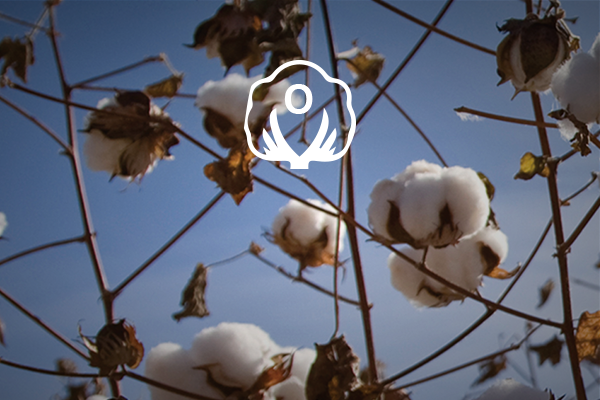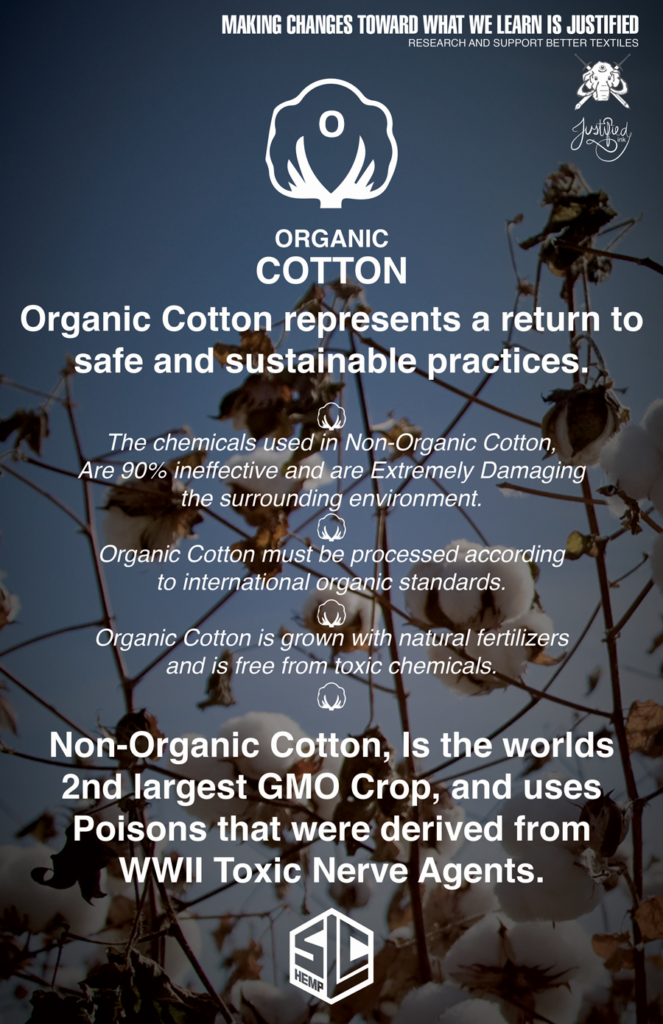
Organic Cotton
Justified Textiles: Organic Cotton
The pesticides used on modern conventional cotton is an exponentially growing threat to people, wildlife and the environment. Most pesticides were originally developed as toxic nerve agents during WWII and they have been linked to many forms of cancers. Conventionally-grown cotton occupies only 3% of the world’s farmland, but uses 25% of the world’s chemical pesticides. In fact, the EPA considers 7 of the top 15 pesticides used on cotton as “likely” or “known” human carcinogens. They continue to use these chemicals despite the studies which show it is estimated that less than 10% of the chemicals applied to cotton accomplish their task. The rest are absorbed into the plant, air, soil, water and eventually, our bodies. It doesn’t end there.
As insects gradually become resistant to pesticides, so ever-increasing amounts are applied to be effective, resulting in massive ecological disasters and crop failures. These hazardous pesticides also pose an increasing danger to wildlife. A 1993 EPA study estimated that ‘one to two million’ birds are killed annually by carbofuran, just one insecticide used on cotton. Conventional cotton is also a major user of toxic herbicides, fungicides and defoliants. During processing, it is subjected to chlorine bleach, heavy metal dyes and formaldehyde resins. The bleach is almost worse than pesticides, causing a myriad of health problems and vast environmental damage. Additionally, genetically modified cotton now accounts for 75% of cotton grown conventionally.
An alternative to these destructive practices is Certified Organic Cotton. It represents a return to safe and sustainable practices. It is grown with natural fertilizers and is free from toxic chemicals. Organic farmers rely on crop rotation to replenish and maintain soil fertility. Mechanical cultivation and botanical or biological means are used to control pests and weeds. A field must be pesticide-free for at least three years to be certified organic, and the cotton must be processed according to international organic standards.
There are many benefits to organically grown cotton. Manual farming and organic practices have a lower carbon footprint. The entire process consumes less fuel and energy and emits fewer greenhouse gases. It is grown with natural rather than synthetic pesticides and fertilizers, no chemical defoliants used. Standards require Eco-friendly processing that does not compromise workers’ health and helps reduce water and electric use and toxic runoff. Strict testing ensures the absence of contaminants like nickel, lead, formaldehyde, amines, pesticides and heavy metals. People with allergies and chemical sensitivity especially benefit from organic cotton clothing. Conventional farming endangers farm workers and their families. There are innumerable cases of serious pesticide-related health problems, including birth defects, long-term memory loss, paralysis and death. Unprotected storage, improper application methods and lack of proper handling is not uncommon, and often leads to tragic accidents.
Organic farming, on the other hand, is not only safer and healthier for farmers, but also encourages just economic systems in the supply chain. It provides an economically viable and socially acceptable alternative to large-scale farming and dependence on subsidies.
The Key Points of Organic Cotton

